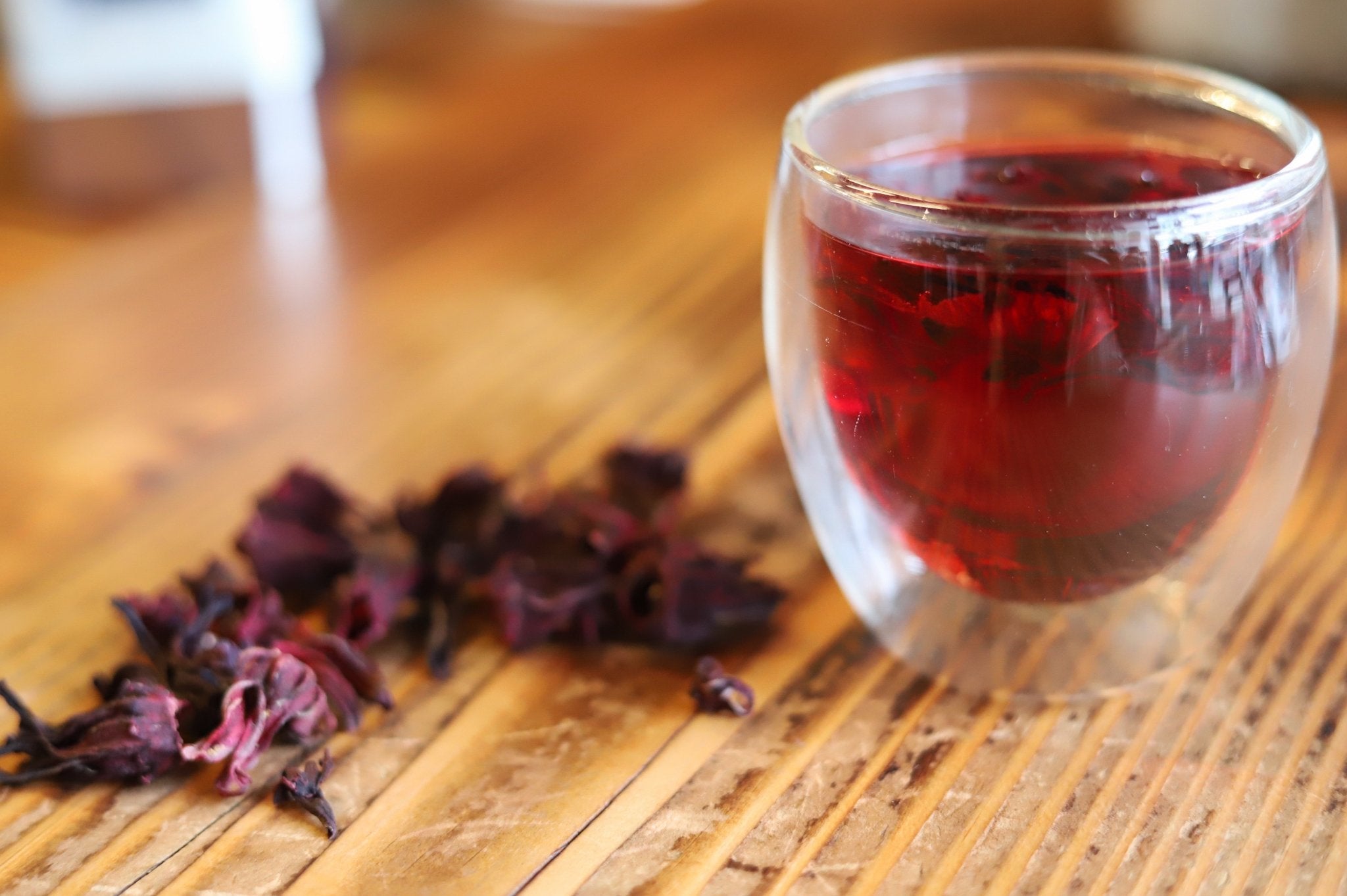What is Hibiscus?
Hibiscus is a genus of plants in the mallow family. For our tea bar, the most important species is Hibiscus sabdariffa, long used by many ethnic groups for its culinary, medicinal, and ceremonial uses. In the Arab world, it is called karkadeh (كركديه); in China, luòshénhuā (洛神花); in Thailand, krachiap; in Myanmar, chin baung; and in Vietnam, it is known as cây bụp giấm or cây quế mầu. Across South Asia and Southeast Asia, it goes by dozens of local names — from gongura in Telugu and ambadi in Marathi, to sillo sougri in Manipur and ya pung among the Marma people of Bangladesh. In Africa, the Caribbean, and Latin America, it is commonly known as bissap, sorrel, or agua de Jamaica.
Historical Use as a Drink
The earliest records of the use of hibiscus date back 4000 years (Murdock). In more recent history, it is used in In Egypt and Sudan as karkadé, served both as a daily refreshment and during special ceremonies. In West Africa, hibiscus is used to prepare bissap, a sweetened, often spiced hibiscus tea. In Mexico, agua de Jamaica — a cold, sweetened hibiscus infusion — is ubiquitous in taco stands.
Sources:
Murdock, George Peter. Africa: Its peoples and their culture history. Vol. 6. New York: McGraw-Hill, 1959.
Da-Costa-Rocha, I., Bonnlaender, B., Sievers, H., Pischel, I., & Heinrich, M. (2014). Hibiscus sabdariffa L. – A phytochemical and pharmacological review. Food Chemistry, 165, 424–443. Elsevier. https://doi.org/10.1016/j.foodchem.2014.05.002
Why is Hibiscus So Popular?
The most important reason: hibiscus tea is delicious! Its striking ruby color and tangy, refreshing flavor profile have broad appeal, especially in beverages like herbal teas, iced drinks, and cocktails. This tisane also seems to have a reputation as a very healthy ingredient. Here are some interesting articles if you want to explore this topic:
Hopkins, A. L., Lamm, M. G., Funk, J. L., & Ritenbaugh, C. (2013). Hibiscus sabdariffa L. in the treatment of hypertension and hyperlipidemia: A comprehensive review of animal and human studies. Fitoterapia, 85, 84–94. Elsevier. https://doi.org/10.1016/j.fitote.2013.01.003
Brewing Guide
| WATER |
100ºC 300ml @ 100°C |
| TEA |
3g |
| STEEP |
3 Mins |
| EQUIPMENT |
Teapot |























